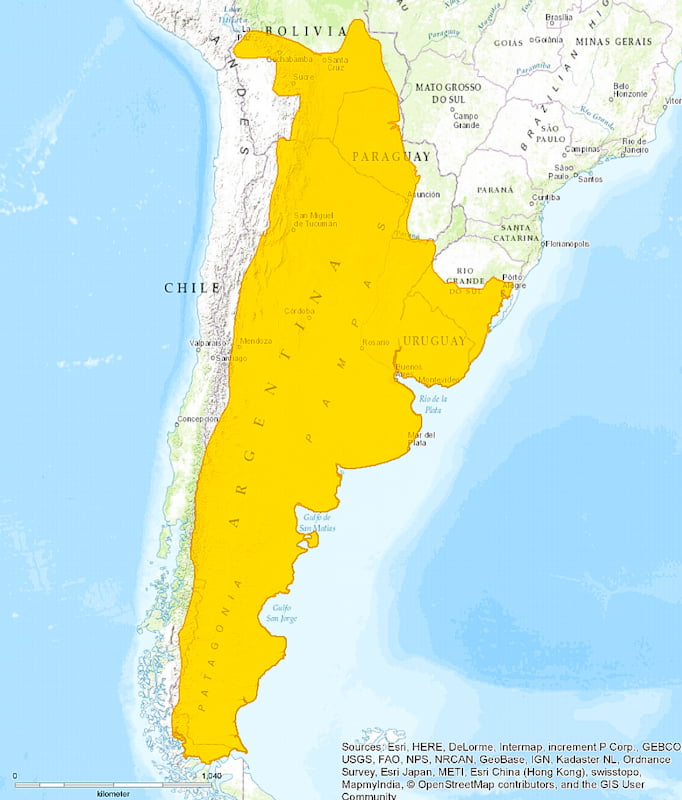The maps on this page tell you exactly where Geoffroy’s cat lives. In words, this small wild cat is found in: south-eastern Bolivia, Paraguay and Argentina east of the Andes and southern Brazil, Uruguay and all the way to the Strait of Magellan in Chile (source: IUCN Red List). The cat lives from sea level to
3,800 meters above sea level. This species is native to the following countries:
- Argentina;
- Bolivia;
- Brazil;
- Chile;
- Paraguay;
- Uruguay.
Map 1 – IUCN Red List

Map 2 – by me based on IUCN Red List and it can be amended by visitors
Geoffroy’s cat for kids
Please click on the image below to be taken to a page on this cat species written with kids in mind.

A bit more about Geoffroy’s cat
Click for a detailed page – Samantha Bonar, the author of Small Wildcats lists Geoffroy’s cat under ‘acrobatic acts’ with the margay, which gives you a clue to their lifestyle and athleticism. She says that the Geoffroy’s cat is a fantastic tree-climber and has been seen walking upside-down along a branch and hanging by its back feet. This species sleeps and hunts in trees and is a good swimmer. They are found in dense, scrubby areas along rivers in the southern half of South America. They are active during the day as well as the night and they hunt rodents, hares, lizards, insects and birds.
This is a small wildcat weighing 9-11 lbs (4.1 kg to 4.9 kg). It looks similar to a domestic cat, specifically a tabby domestic cat and has a handsome yellow or silver coat with black spots. Sometimes they are melanistic or black all over. Many thousands have been killed for their fur to supply the fur trade. In a three-year period from 1976-1979, 350,000 skins were exported from Argentina alone. Hunting is now prohibited but their numbers continue to decline. Despite their decline in numbers, they are classified as Least Concern by the IUCN Red List because “it is widespread and abundant over most of its range”. The date of this assessment is April 20, 2014. It is therefore 7 years out-of-date. Come on IUCN Red List! You are asleep on the job. We need a more recent appraisal, please.
The cat was named after the scientist Geoffroy St. Hilaire in 1844. People often misspell the name: Geoffroy cat. This is incorrect.
SOME MORE ON GEOFFROY’S CAT.

